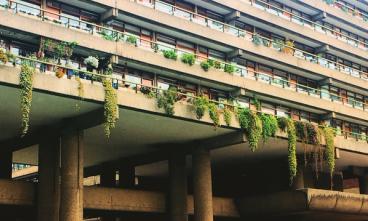What's happening to house prices in Scotland?
Introduction
The housing market in Scotland, like elsewhere in the UK, has seen prices cool from their peak levels in 2022. After rapid growth through the pandemic, the market is now experiencing a period of stabilization. In this post, we’ll analyse the latest house price trends in Scotland and the factors driving change.
Price Changes in Recent Months
In July 2023, average house prices in Scotland fell by 0.7% compared to the same month last year. The current average price sits at £201,501 according to Halifax data (source).
This marks a slowdown from massive growth during the pandemic. Between June 2020 and June 2022, average prices increased by over 20% in Scotland.
So the market has cooled slightly from its peak, though prices remain elevated compared to pre-pandemic.
What's Driving the Changes?
Much like the rest of the UK, Scotland's housing market is being impacted by several factors
Rising interest rates
Following Bank of England base rate hikes. The Bank of England has raised its base rate five times since December 2021, taking it from a historic low of 0.1% up to 5.25% as of writing. This has fed through to mortgage rates, which have also increased significantly. The average 2-year fixed mortgage rate is now over 6.84%. This sharp rise in mortgage rates makes monthly repayments much more expensive.
A worsening cost of living crisis, as inflation squeezes budgets
Energy bills, fuel, and food costs have all skyrocketed. This is squeezing household budgets and leaving buyers with less disposable income. First-time buyers in particular are impacted, as saving for a deposit becomes more difficult amid high rents and other costs.
Economic uncertainty as risks of a recession grow
There are growing concerns about the UK economy entering a recession. GDP declined in Q2 2022, inflation remains sky-high, and consumer confidence is low. This uncertain economic outlook makes buyers more cautious about making major long-term purchases like houses.
This is weighing on buyer demand and budgets, taking some momentum out of the market. However, supply remains constrained by a chronic shortage of homes for sale. This imbalance continues to put upward pressure on prices.
| Date | Price |
|---|---|
| Feb, 2023 | £181,730 |
| Mar, 2023 | £183,555 |
| Apr, 2023 | £186,059 |
| Jul, 2023 | £191,468 |
| Oct, 2023 | £190,170 |
| Nov, 2023 | £189,809 |
| Jan, 2023 | £184,241 |
| Mar, 2024 | £186,725 |
| Jun, 2023 | £189,598 |
| Sep, 2023 | £191,123 |
| Jan, 2024 | £186,055 |
| Jul, 2024 | £199,398 |
Average price of a property in Scotland over the last 12 months
What Does the Future Hold?
While the market has lost steam, analysts don't foresee a major crash in Scottish house prices.
Reasons for a soft landing include:
- Mortgage rates expected to peak soon
- Employment still strong, supporting buyers' finances
- Ongoing lack of supply maintaining competition between buyers
Overall, Scotland's housing slowdown is following a similar pattern to the wider UK. The market is rebalancing from an exceptionally strong pandemic rebound. Further moderate declines in prices are likely, improving affordability slightly. But a harsh crash looks unlikely given constrained supply and still solid demand fundamentals.
Property Prices in your area
Property prices vary across Scotland, and you can find out what prices are doing for property types in your area by using one of the links below. Our data comes directly from HM Land Registry and is updated monthly.
If you're searching for a specific region, here are some of our most frequently searched locations
Property Prices In Aberdeenshire
Flat & Apartment Prices In Edinburgh
Conclusion
Scotland's red-hot housing market has cooled lately, with prices down slightly year-over-year in July 2022. Rising rates, high inflation, and recession risks have dampened buyer demand and budget. But the market looks set for a period of stabilization rather than any major crash. While sellers may need to lower expectations, buyers will welcome improved affordability. With strong employment and limited supply, the fundamentals remain in place to support a healthy housing market over the long-term.





